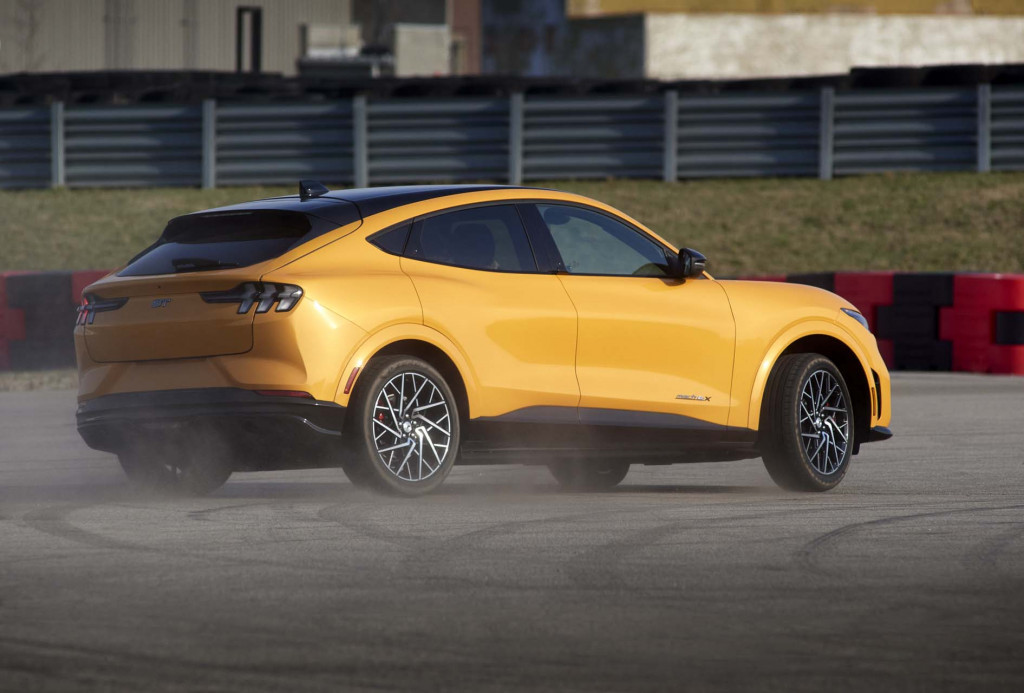Ford may have found a way for drifting to live on in the age of electric cars.
First spotted by Motor1, a recent patent filing with the United States Patent and Trademark Office (USPTO) shows a drift mode designed to work with an internal-combustion engine or electric motor.
Ford introduced drift mode on the Focus RS, using the car's all-wheel-drive system to send more torque to the rear wheels—particularly the outside rear wheel—to help induce a slide. In 2017, the automaker also showed an accessory Drift Stick electronic handbrake. But the drift mode described in Ford's patent filing works differently than these previous iterations.

2021 Ford Mustang Mach-E GT
According to the documents, this version of drift mode would decouple the driven wheels, use the car's friction brakes to lock them up and start a slide, and then add torque to keep the drift going. The amount of torque would be determined by wheel-speed sensor data. A computer would compare the actual wheel speed to a predetermined drift-friendly target.
The use of friction brakes sets this approach apart from Ford's previous efforts, as well as the drift modes employed by current BMW M and Mercedes-Benz AMG models, as well as the Volkswagen Golf R. But will we see it on a production vehicle?
A patent filing is no guarantee of production plans. Automakers are quick to patent new technologies even if they don't intend to use them on production vehicles imminently. But Ford has shown an interest in electric performance vehicles with the Mustang Mach-E GT, and a new Focus RS could turn up at some point for the European market. So never say never.